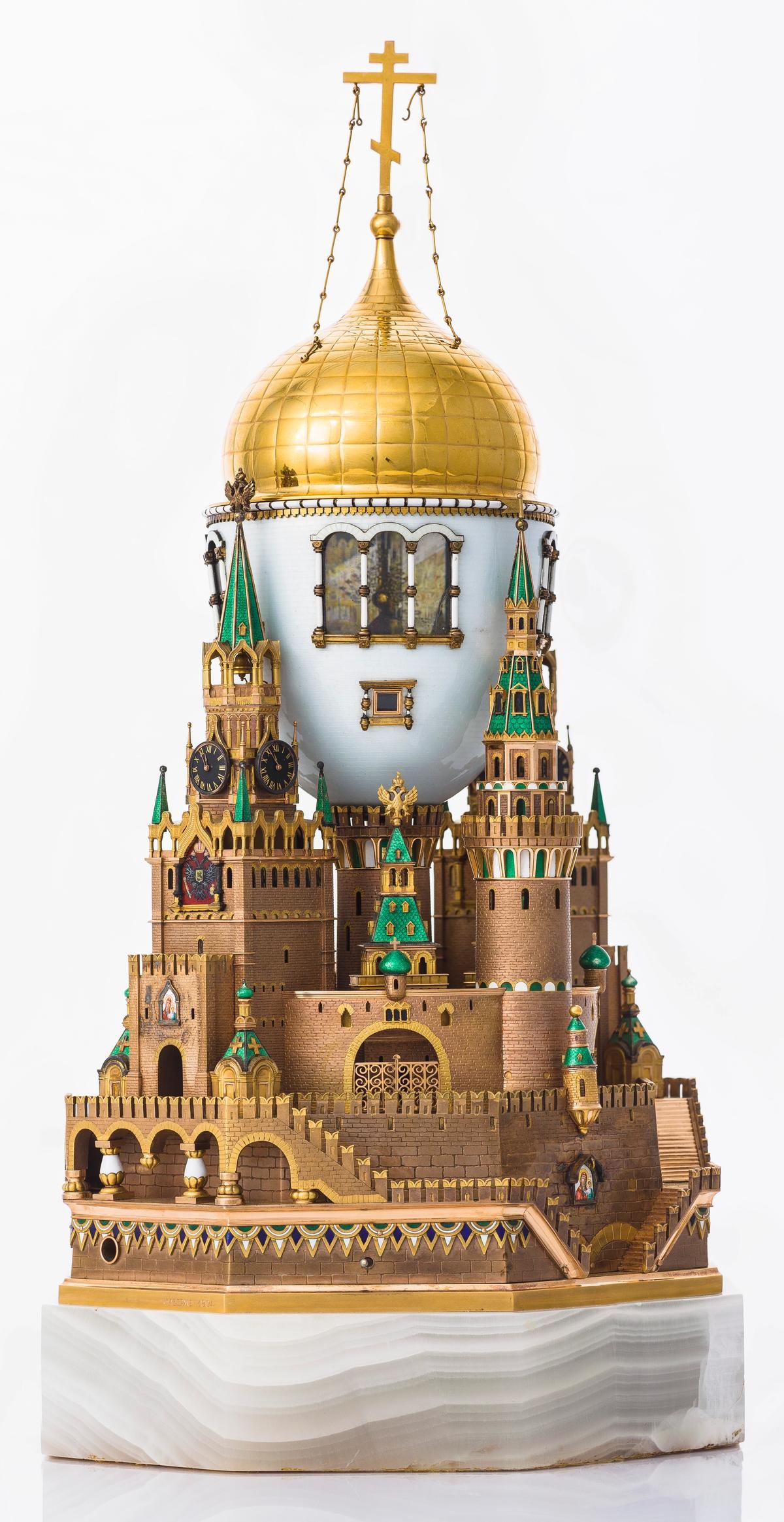The largest Imperial egg made by Peter Carl Fabergé will go on show at the Victoria and Albert Museum (V&A) later this year in an exhibition dedicated to the celebrated Russian goldsmith whose lavish and elegant creations are synonymous with opulence (Fabergé in London: Romance to Revolution, 20 November-8 May 2022).
The immense object, known as the Moscow Kremlin Egg (1906), will be shown in the UK for the first time. The egg, modelled on the architecture of the Dormition Cathedral in the Russian capital, will be loaned by Moscow Kremlin Museums along with two other eggs: the Alexander Palace Egg (1908), which is decorated with portraits of Tsar Nicholas II and his family, and the Romanov Tercentenary Egg (1913).

The Alexander Palace Egg by Fabergé and chief workmaster Henrik Wigström (1908) © The Moscow Kremlin Museums
Other key contributors to the show include the Queen who will lend the Basket of Flowers egg (1901) and a Chelsea Pensioner figurine made of sapphires and gold (1909). The State Hermitage Museum in St Petersburg will lend a copy of the Imperial Regalia (1900), a miniature replica of the Russian crown jewels.
Fabergé’s workshops in Moscow and St Petersburg, which employed more than 500 craftsmen at the end of the 19th century, are known for their fantastic Easter eggs made for the Russian Imperial court: Fabergé was appointed the Imperial goldsmith in 1885.
Tsar Alexander III began the most expensive Easter tradition in history when he decided to give a jewelled egg to his wife, Empress Maria Fyodorovna, in 1885. Known as the Hen Egg, its white enamelled shell opens to reveal a yolk whose yellow mass is crafted from gold. From 1895, the royal heir Nicholas II continued to honour the family matriarchs, presenting Fabergé eggs annually to both his wife, Empress Alexandra Fyodorovna, and his mother Maria.
The V&A exhibition will also go into great detail about Fabergé’s London branch, the only one outside Russia, which opened at the turn of the 20th century. Royal patronage was key to the brand’s success; the London venue sold more than 10,000 objects between 1903 and 1915, with King Edward VII and Queen Alexandra among its clients.
“Fabergé carefully tailored his works to his British clientele. He created hardstone portraits of the farm animals King Edward and Queen Alexandra bred at Sandringham, their favourite country estate, and objects enamelled in the King’s horse racing colour,” says a V&A statement. A silver model portrait of Persimmon (1908), the King’s favourite racehorse—also on loan from Queen Elizabeth II—is included.
Earlier this month, Mikhail Piotrovsky, the director of the State Hermitage Museum, responded to claims made by the London art dealer Andre Ruzhnikov that an exhibition held recently at the Winter Palace in the museum (Fabergé, Jeweller to the Imperial Court, closed 14 March) allegedly included a number of “tawdry fakes”.
“Technical analysis of the objects on display is part of the Hermitage’s Fabergé research programme. It is being carried out with the owners’ consent. The results of these studies and of panel discussions are to be published later,” Piotrovsky told our sister publication The Art Newspaper Russia.


